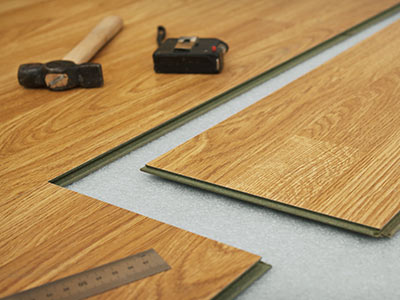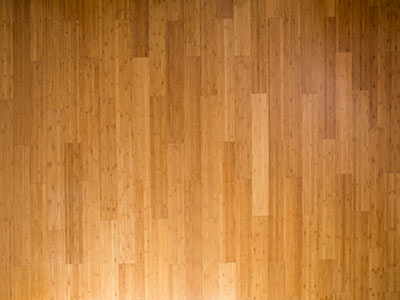Back to Flooring Products
Bamboo vs Laminate Flooring
 With countless materials and styles available, making an informed decision is key to achieving both aesthetic appeal and practical functionality in your home or business. From hardwoods to tiles, carpets to vinyl, the choices can be overwhelming. However, by delving into the unique characteristics and benefits of each flooring type, you can navigate this decision-making process with confidence. In this article, we'll provide an insightful overview of two popular flooring options: bamboo and laminate. By exploring their distinct features and considerations, we aim to equip you with the knowledge needed to make the best choice for your specific needs and preferences.
With countless materials and styles available, making an informed decision is key to achieving both aesthetic appeal and practical functionality in your home or business. From hardwoods to tiles, carpets to vinyl, the choices can be overwhelming. However, by delving into the unique characteristics and benefits of each flooring type, you can navigate this decision-making process with confidence. In this article, we'll provide an insightful overview of two popular flooring options: bamboo and laminate. By exploring their distinct features and considerations, we aim to equip you with the knowledge needed to make the best choice for your specific needs and preferences.
Durability
When it comes to selecting the ideal flooring for your space, durability stands as a paramount consideration. Bamboo flooring is renowned for its inherent strength and resilience, often likened to that of hardwood. With bamboo's natural hardness surpassing even that of white oak, it proves highly resistant to wear and tear, making it a formidable choice for high-traffic areas. Conversely, laminate flooring boasts its own durability advantages, engineered to withstand the rigours of everyday use with ease. In particular, laminate's scratch resistance makes it an attractive option for homes with pets or young children, where scratches and scuffs are common occurrences. However, when comparing scratch resistance between bamboo and laminate, nuances emerge, and understanding these distinctions is crucial in selecting the flooring best suited to your lifestyle and needs.
Installation
When it comes to installing new flooring, understanding the installation methods and ease of the process is essential for a smooth and efficient renovation. Bamboo flooring offers various installation methods, including tongue-and-groove systems and interlocking mechanisms, providing flexibility to accommodate different preferences and needs. On the other hand, laminate floor installation also offers diverse options, such as click-lock systems and glue-down methods, allowing for application versatility. When comparing the ease of installation between bamboo and laminate, factors such as the complexity of the installation process, required tools, and the potential need for professional assistance come into play. While both materials offer straightforward installation procedures suitable for DIY enthusiasts, laminate flooring often holds an edge in terms of simplicity and accessibility, making it an appealing choice for those seeking a hassle-free renovation experience.
Moisture resistance
Moisture resistance is a critical factor to consider when selecting flooring, particularly in areas prone to humidity or moisture exposure. Bamboo flooring, while durable and eco-friendly, is known for its susceptibility to moisture, making it less suitable for environments with high humidity levels or frequent exposure to water. Conversely, laminate flooring offers superior moisture resistance, thanks to its synthetic construction and protective layers, making it an excellent choice for bathrooms, kitchens, and other moisture-prone areas. When comparing the moisture resistance of bamboo and laminate in different environments, laminate often emerges as the preferred option for spaces where moisture levels fluctuate or spills are common. Whether in humid climates or areas prone to spills, laminate flooring provides peace of mind with its exceptional moisture resistance, ensuring longevity and durability in any environment.
Environmental Impact

Considering the environmental impact of flooring materials is increasingly important in today's eco-conscious world. Bamboo flooring stands out for its eco-friendly nature, as bamboo is a rapidly renewable resource that grows quickly and abundantly. This makes bamboo a sustainable choice for environmentally conscious consumers seeking to minimise their carbon footprint. In contrast, laminate flooring may raise environmental concerns due to its synthetic composition, which often includes resins and chemicals. However, advancements in manufacturing processes have led to the development of more sustainable laminate options, including recycled materials and low-emission adhesives. When comparing the sustainability factors of bamboo and laminate, bamboo generally holds a favorable position due to its renewable nature and minimal environmental impact throughout its lifecycle. Nonetheless, both materials offer opportunities for environmentally responsible choices, allowing consumers to select flooring options that align with their sustainability values.
Cost
Cost is a significant consideration when it comes to selecting flooring for your space, and understanding both the upfront and long-term expenses is crucial for making an informed decision. Bamboo flooring typically comes with a higher upfront cost compared to laminate, reflecting its premium quality and eco-friendly reputation. While the initial investment in bamboo may be higher, it's essential to consider the long-term cost comparison. Bamboo's durability and longevity often result in lower maintenance and replacement costs over time, potentially offsetting the higher initial expense. In contrast, laminate flooring offers a more budget-friendly upfront cost, making it an attractive option for those working within a tighter budget. However, it's important to weigh this against potential long-term expenses, as laminate may require more frequent replacement or maintenance, impacting its overall cost-effectiveness. Ultimately, assessing both the upfront and long-term costs of bamboo and laminate flooring enables you to make a financially prudent choice that aligns with your budget and long-term goals.
Maintenance
Maintenance is an important aspect of preserving the longevity and appearance of your flooring investment and understanding the maintenance requirements for bamboo and laminate is essential for informed decision-making. Bamboo flooring typically requires regular sweeping or vacuuming to remove dust and debris, along with occasional mopping using a damp cloth or mop. Additionally, bamboo may benefit from periodic resealing or refinishing to maintain its protective layer and enhance its resilience against wear and tear. In contrast, laminate flooring offers straightforward maintenance requirements, often requiring only regular sweeping or vacuuming and occasional mopping with a damp cloth. The synthetic nature of laminate makes it inherently resistant to stains and scratches, reducing the need for specialised cleaning or maintenance. When comparing the ease of maintenance between bamboo and laminate, laminate flooring emerges as the more convenient option, requiring less time and effort to keep it looking its best. Ultimately, choosing flooring with maintenance requirements that align with your lifestyle and preferences ensures a hassle-free and enjoyable ownership experience.
Lifespan
 Considering the lifespan of flooring materials is crucial for long-term planning and investment. Bamboo flooring is renowned for its durability and can last for decades with proper care and maintenance. The natural hardness of bamboo, coupled with its resistance to wear and tear, contributes to its impressive longevity. On the other hand, laminate flooring also offers a respectable lifespan, typically lasting 10 to 25 years depending on factors such as quality, usage, and maintenance. While laminate may not match the lifespan of bamboo flooring, it still provides reliable performance and durability over its lifespan. When comparing the longevity factors between bamboo and laminate, considerations such as material quality, installation, and environmental conditions play significant roles.
Considering the lifespan of flooring materials is crucial for long-term planning and investment. Bamboo flooring is renowned for its durability and can last for decades with proper care and maintenance. The natural hardness of bamboo, coupled with its resistance to wear and tear, contributes to its impressive longevity. On the other hand, laminate flooring also offers a respectable lifespan, typically lasting 10 to 25 years depending on factors such as quality, usage, and maintenance. While laminate may not match the lifespan of bamboo flooring, it still provides reliable performance and durability over its lifespan. When comparing the longevity factors between bamboo and laminate, considerations such as material quality, installation, and environmental conditions play significant roles.
In conclusion, when comparing bamboo and laminate flooring, several key points emerge. Bamboo flooring offers durability, eco-friendliness, and a visually appealing aesthetic, but it may require more maintenance and come with a higher upfront cost. On the other hand, laminate flooring is more budget-friendly, easy to install, and requires minimal maintenance, although it may not match the natural beauty and eco-friendly qualities of bamboo. When making a decision between the two, it's essential to consider factors such as durability, moisture resistance, environmental impact, cost, and maintenance requirements. Ultimately, the choice between bamboo and laminate flooring depends on individual preferences, priorities, and lifestyle needs. Whether you prioritise sustainability, affordability, or ease of maintenance, selecting the flooring option that aligns with your goals ensures a stylish and functional space for years to come.